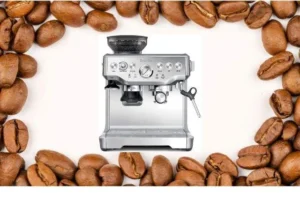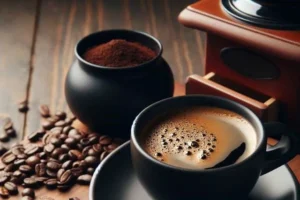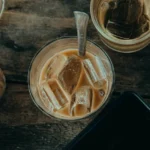Latte vs Coffee: Unraveling the Caffeine Conundrum
The world runs on coffee. This beloved brew is deeply ingrained in cultures and communities across the globe. For many, the morning cup of joe is a ritual – a habitual comfort that jumpstarts the day.
In 2021 alone, global coffee consumption reached 166.63 million 60kg bags. The world just can’t get enough of this caffeinated elixir.
But coffee culture is evolving. With the rise of Starbucks and other specialty coffee chains, customized beverages are taking over. One drink, in particular, has emerged as coffee’s biggest competition: the latte.
Lattes are espresso-based milk drinks topped with frothy, steamed milk. This morning go-to offers a more indulgent coffee experience, without the acidic bite of black coffee.
So in the great debate between latte vs coffee, which reigns supreme? This comprehensive guide will uncover everything you need to know about these caffeinated classics.
Latte vs Coffee: Key Takeaways
- Latte vs Coffee Fundamentals: The article covers the basics of coffee and lattes, including bean types, brewing methods, and caffeine content.
- The Art of Making Lattes: It explores the craft of preparing lattes, including the ingredients, espresso quality, and milk frothing techniques.
- Taste Comparison: The article highlights the taste differences between coffee and lattes, emphasizing how lattes mellow the bitterness of coffee with a creamy sweetness.
- Caffeine Facts and Myths: The article addresses common myths about coffee and lattes while explaining that coffee generally contains more caffeine than lattes.
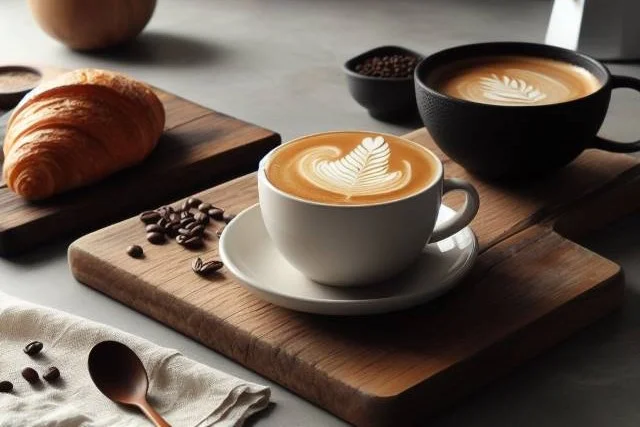
Understanding Coffee Basics
To understand the distinction between coffee and latte, we must first explore what defines a standard cup of coffee.
Coffee Beans: The Heart of the Brew
Coffee originates from roasted coffee beans, the seeds of the Coffea plant. There are two main commercial coffee species used today:
- Arabica: Known for its sweeter, more complex flavor with notes of fruit and sugar. Makes up 60-80% of global coffee production.
- Robusta: Contains 50-60% more caffeine but has a harsher, more bitter taste. Mainly used for instant coffee and espresso blends.
Arabica beans are considered higher quality but are more susceptible to disease. Robusta is hardier and cheaper to grow.
The roasting process also impacts a coffee’s taste. Lighter roasts preserve more bright, fruity flavors. Dark roasts develop deeper, chocolatey notes with a bittersweet aftertaste. Most daily drinkers opt for a medium roast.
Brewing Methods
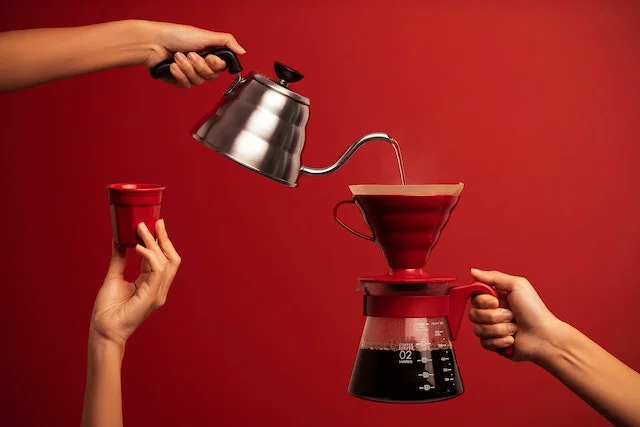
Once roasted, the beans are ground and steeped to extract their oils and soluble compounds. Common brewing techniques include:
- Drip coffee: Ground coffee is steeped in hot water, filtered, and dripped directly into a pot or cup. This is the standard home and office brewing method.
- Espresso: Finely ground beans are packed into a portafilter and brewed under high pressure. This produces a concentrated shot with crema foam on top.
- French press: Coarsely ground coffee is fully immersed in water, then filtered through a plunger. Brews a robust, oil-rich cup.
The grind size, brew time, and water temperature all impact the final flavor. But however you brew it, coffee packs a serious caffeine punch.
Coffee’s Caffeine Content
The caffeine content in coffee depends on several factors:
- Bean type: Robusta beans contain almost twice as much caffeine as Arabica varieties.
- Roast: Light roasts retain more caffeine from the raw bean.
- Brew method: Drip coffee extracts more caffeine than espresso due to its higher bean-to-water ratio.
- Size: The caffeine content scales with the number of ounces.
On average, an 8-ounce cup of drip coffee contains 65-120mg of caffeine.
Health experts recommend limiting intake to 400mg daily. Drinking too much can cause anxiety, insomnia, and restlessness in some.
When it comes to coffee vs latte caffeine, the size and number of espresso shots used also come into play…
The Art of Crafting Lattes
A latte transforms coffee into a milk-based espresso drink with a frothy cap. But what exactly defines this creamy confection?
What is a Latte?
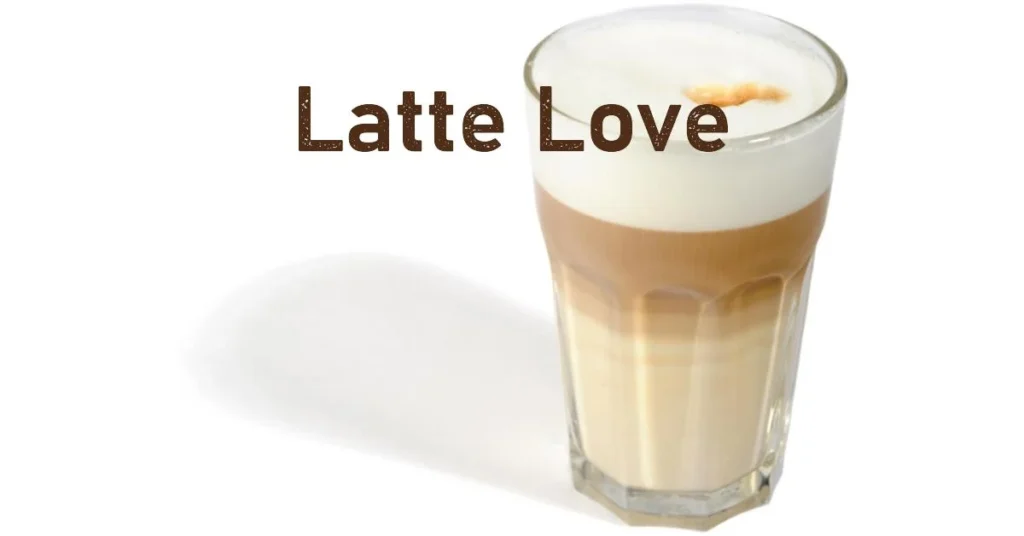
A latte is comprised of the following elements:
- Espresso: The base is 1-3 shots of espresso, typically made with a dark roast blend.
- Steamed milk: This is added to the espresso, creating a layering effect. Whole milk creates the most velvety texture, but non-dairy alternatives are also popular.
- Milk foam: Frothed milk tops off the drink with a light, airy foam. Latte art is then etched into the foam.
- Flavorings (optional): Vanilla, caramel, and seasonal syrups can be used to customize the latte’s taste.
With its origins in Italian coffee culture, the latte has spread worldwide. But even in specialty cafes, quality can vary greatly.
The Perfect Espresso Shot
A balanced espresso shot is crucial for latte-making. The ideal is a 1-to-2-ounce double shot, brewed hot at 9 bars of pressure. Temperature is key, as shots below 190°F will lack body and sweetness.
The shot must be pulled directly into the cup to preserve crema. Proper extraction takes 18-30 seconds depending on the beans. If poured too fast, the shot will be thin and weak.
Steamed Milk: The Key to a Creamy Latte
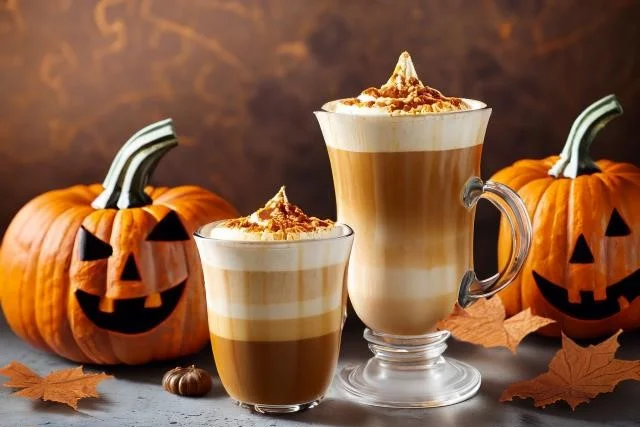
Steaming is what transforms milk into the signature silky foam topping a latte. The process incorporates tiny air bubbles into the milk, decreasing density. Tips for foolproof steaming:
- Use fresh, cold milk. Whole milk with 3-4% fat content steams best.
- Purge the steam wand before inserting it just below the milk’s surface.
- Position the pitcher at an angle to create centrifugal spinning.
- Heat milk to 150-160°F to achieve the microfoam texture.
- Gently swirl to incorporate foam but don’t overmix.
The steamed milk should form a glossy emulsion, free of large bubbles. This creates an indulgent, drinkable latte.
Flavorings and Variations
The flavor possibilities are endless when making a latte. Some customer favorites include:
- Vanilla latte: Vanilla syrup adds a sweet, aromatic flavor.
- Caramel latte: Buttery caramel sauce gives a touch of saltiness.
- Pumpkin spice latte: Cinnamon, nutmeg, and cloves evoke fall.
- Matcha latte: Powdered green tea lends its earthy flavor and antioxidants.
Latte variations from around the world include the Hong Kong-style Silk Latte, Indian Chai Latte, and Spanish Latte con Hielo. Customize your drink by experimenting with flavors.
Latte Art: Aesthetic Appeal
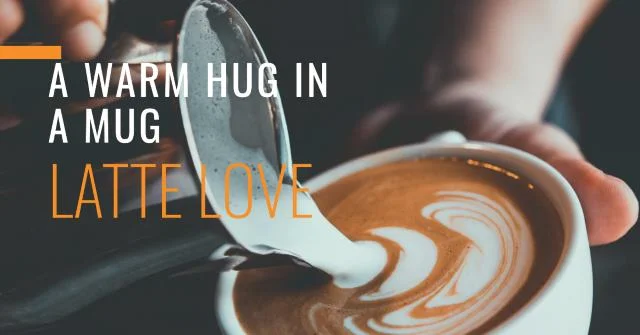
Latte art is what elevates a latte from delicious to downright Instagrammable. Baristas pour the steamed milk in such a way to create freeform patterns in the foam, including:
- Rosettas: Intricate floral shapes made with rhythmic pouring.
- Hearts: Formed by drizzling milk back and forth into the crema.
- Swans: An elegant pour reminiscent of a swan’s curved neck.
- Tulips: Recreated by “blooming” the milk outwards.
Latte art adds visual enjoyment to your coffee experience. But beyond aesthetics, how does the latte’s taste compare?
Latte vs Coffee: A Taste Test
Let’s break down the distinctive flavor profiles of latte vs drip coffee.
Coffee’s Robust Bitterness
The hallmarks of black drip coffee are full body, robust aroma, and slightly bitter finish. These characteristics come from the coffee oils and soluble compounds extracted during brewing.
Whole beans and proper grind size also impart complexity. Notes like berry, chocolate, and citrus come through, balanced by acidity.
Without milk, coffee’s bitterness is front and center. The taste can vary from pleasantly tangy to harshly sour depending on the brew.
Latte’s Smooth and Creamy Texture
In a latte, steamed milk tames coffee’s rough edges. The creamy texture softens the acidity and enhances sweetness.
While drip coffee aroma is quite potent, a latte’s fragrance is more muted. The nutty espresso blends harmoniously with the milk’s natural sweetness.
The milk foam lightens the drink’s mouthfeel, making it feel less dense than straight espresso shots. Flavorings also add dimensions like vanilla and caramel.
Acidity and Bitterness Levels
Coffee shines in terms of perceived acidity and complexity. But for some palates, this adds an unwanted tart, tannic edge.
In a latte, the milk negates most of the acidic bite. This increases the sweetness, making lattes more approachable and mainstream-friendly.
Sweetness and Creaminess

Those who enjoy sweet treats will likely prefer the latte’s indulgent, milkshake-like flavor. The creamy texture counterbalances any residual espresso bitterness.
Coffee highlights the pure, unadulterated taste of the bean. But it lacks the comfort factor of a latte’s sweet, velvety foam.
Aroma and Fragrance
Lattes give off a pleasantly aromatic scent. But the steam masks some of coffee’s vibrant, fragrant oils.
A black cup of joe has room for its aromatics to shine. Coffee aficionados argue this singular scent is reason enough to drink it straight.
So in matters of taste, lattes win for creaminess while coffee takes the complexity prize. But how do their caffeine contents stack up? Let’s dig in…
Caffeine Content Comparison
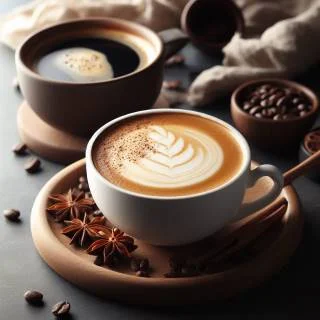
Many assume espresso-based drinks like lattes pack more buzz. But this isn’t always the case…
Latte’s Caffeine Content
On average, a 12-ounce latte made with double shots contains 150mg of caffeine. However, this varies based on factors like:
- Number of shots: More espresso means more caffeine. A quad shot latte may contain over 200mg.
- Shot size: Standard doubles have 40-75mg each. Solo shots have less.
- Espresso type: Robusta-heavy blends have 50% more caffeine than Arabica.
- Milk type: Non-dairy milk doesn’t affect the caffeine content.
So a large latte made with robusta shots could get close to 300mg of total caffeine. For reference, a 250ml Red Bull has 80mg.
Coffee’s Caffeine Content
To compare, a 12-ounce drip coffee generally has 150-250mg of caffeine. Stronger black coffee can approach 400mg.
Coffee’s higher bean-to-water ratio during brewing extracts more caffeine from the grounds. Light roasts also retain more of the bean’s natural caffeine.
Which Packs a Stronger Punch?

Latte caffeine content is dependent on the espresso, while coffee is naturally higher in caffeine across preparation methods.
For those seeking a lightweight buzz, single-shot lattes are your best bet. But for caffeine lovers, black coffee wins for delivering a bigger energizing punch.
Latte vs Coffee: Popular Myths Debunked
Before deciding between latte or coffee, let’s separate fact from fiction on these vital brews.
“Coffee is too bitter.”
Quality coffee served fresh should strike a pleasant balance. Overextraction and low-grade beans are what typically cause an intense bitterness.
Starting with quality Arabica beans and dialing in your brew method helps highlight coffee’s sweeter notes. Specialty light roasts are naturally less bitter as well.
“Lattes are just for hipsters.”
Lattes have mainstream appeal thanks to their creamy, approachable flavor. Their popularity across ages and demographics shows coffee drinks don’t have to be pretentious.
“Coffee dehydrates you.”
It’s true that caffeine has a mild diuretic effect, but coffee is over 99% water. As long as you don’t overdo the caffeine, coffee contributes to your daily fluid intake.
Feel free to enjoy your brew of choice without fretting over these unwarranted myths. But there is one aspect of lattes and coffee you may want to customize…
The Role of Milk Alternatives

With dairy sensitivities on the rise, non-dairy alternatives have become a huge part of coffee culture. Here’s how they impact the latte vs coffee decision.
Dairy vs Non-Dairy Milk
Traditional dairy milk lends lattes their signature creaminess thanks to fat content, sugars, and proteins. But today’s baristas go beyond just whole and skim milk.
Plant-based milk options include:
- Almond milk: Nutty and low in calories but lacks thickness.
- Soy milk: Creamy protein-rich base but may have a bean-y taste.
- Oat milk: Naturally sweet with a frothy foam. Great latte consistency.
Each milk alternative changes the flavor and nutrition of the drink. Try a few varieties to see what suits your preferences.
Customizing Your Latte with Milk Alternatives
Non-dairy milk won’t substantially change the caffeine in your latte – that comes from the espresso.
What they will impact is the texture, sweetness, and overall drinking experience. Soy and oat milk steam to a frothy foam for gorgeous dairy-free latte art.
For those avoiding caffeine, many milk alternatives can be frothed and flavored just like lattes minus the coffee. You can “caffeinate” drinks instead with matcha or chocolate mixes.
Pricing and Accessibility

Are lattes a costly indulgence or an affordable luxury? Let’s compare the pricing and accessibility of each drink.
Latte vs Coffee: Which is More Expensive?
On average, a 12-ounce latte from a coffee shop costs $4-6 while brewed coffee is $2-3 (the cost will depend on location, quality of the coffee shop etc). Lattes require more labor and ingredients, naturally driving up the price.
But make your coffee at home and the script flips. Using a basic at-home espresso machine and milk frother, you can create lattes for well under $1 each.
Meanwhile, quality coffee beans, a grinder, and a pour-over setup can set you back quite a bit. Per cup, costs ultimately come out similar for at-home preparation.
Finding Quality Coffee and Lattes
Coffee shops on every corner serve up mediocre lattes, but amazing brews require some digging. Look for reputable local roasters and well-trained baristas.
Buying directly from specialty roasters, whether online or in-store, yields the best-tasting freshly roasted coffee. Seek out single-origin beans for unique flavor profiles.
Budget-Friendly Options
For wallet-friendly lattes, make your own following coffee shop recipes. Purchase milk frothers starting at $10.
Drip machines like the Moccamaster earn barista-level status for everyday coffee perfection. But basic $20 Mr. Coffee models work fine too.
With the right tools, you can save big dollars brewing cafe-caliber drinks at home.
Latte Art: A Visual Treat

Beyond flavor, one clear distinction between lattes and plain coffee is simple: latte art. This delicate pour adds beauty and fun to any drink.
The History of Latte Art
Latte art began in 1980s Seattle, with espresso pioneers David Schomer and Hiroshi Sawada considered “the father of latte art”. Baristas started freestyle pouring to delight customers.
The trend spread across Europe and the US through global barista competitions. From decorative flourish to certified skill, latte art has become a mark of quality coffee.
Techniques for Creating Latte Art
While latte art may seem daunting, a few fundamentals transform basic pours into ethereal designs:
- Start with fresh espresso and properly steamed milk
- Hold the cup close to the spout when pouring
- Pour steadily and wiggle the milk between patterns
- Experiment with milk ratios and pouring heights
- Etch final details by drizzling just foam on top
- Practice, practice, practice for perfection
Don’t be intimidated to give it a try – your inner barista can handle it!
Instagram-Worthy Latte Designs
Once you master the basics, try crafting these Instagrammable designs:
- Tulips – Create blooming flowers straight from your cup.
- Hearts – Pour freeform or template hearts for your love.
- Rosettas – Build ornate towers one layer at a time.
- Swans – Form graceful arcs and necks.
Latte art brightens your coffee routine and makes the perfect photo op. While fun and flashy, a well-crafted latte still comes down to taste…
Conclusion
When considering the latte versus coffee debate, personal preference trumps all. Both offer wonderful ways to savor your daily caffeine.
Lattes provide rich, comforting flavors punched up with foamed milk. Coffee highlights pure, nuanced tasting notes in an intensely aromatic cup.
There’s also so much diversity beyond these basics. Experiment with cold brew, nitro coffee, cortados, cappuccinos, Americanos, and more!
The world of coffee is an adventurous one. Regardless of your brew, embrace all the variations you can taste. And never forget – there is no wrong way to enjoy caffeine.
So whether you crave a cozy vanilla latte or a black drip cup, sip your way and embrace it fully. Because in the end, we all run on caffeine!
Latte vs Coffee: Frequently Asked Questions
The key difference is that a latte is an espresso-based drink with steamed milk while coffee is brewed from ground coffee beans. Lattes have a creamier, milkier taste compared to the strong coffee flavor of black coffee.
Black coffee generally contains more caffeine than a latte. An 8 oz coffee can have 95-200 mg caffeine while an 8 oz latte has 63-126 mg. However, the number of espresso shots in a latte impacts the caffeine level.
A latte is not technically a type of coffee since it contains steamed milk. It is an espresso-based milk drink. However, it is still considered a coffee beverage.
Whole milk is best for making a creamy latte with that signature silky texture. Skim milk contains less fat so it won’t froth as well when steamed. Many coffee shops now offer non-dairy milk options too like almond or oat milk.
To make quality lattes at home, you’ll need an espresso machine or stovetop espresso maker to brew shots of espresso. You’ll also need a milk frothing pitcher and steamer wand to steam and froth the milk for the latte’s signature creamy layer.



